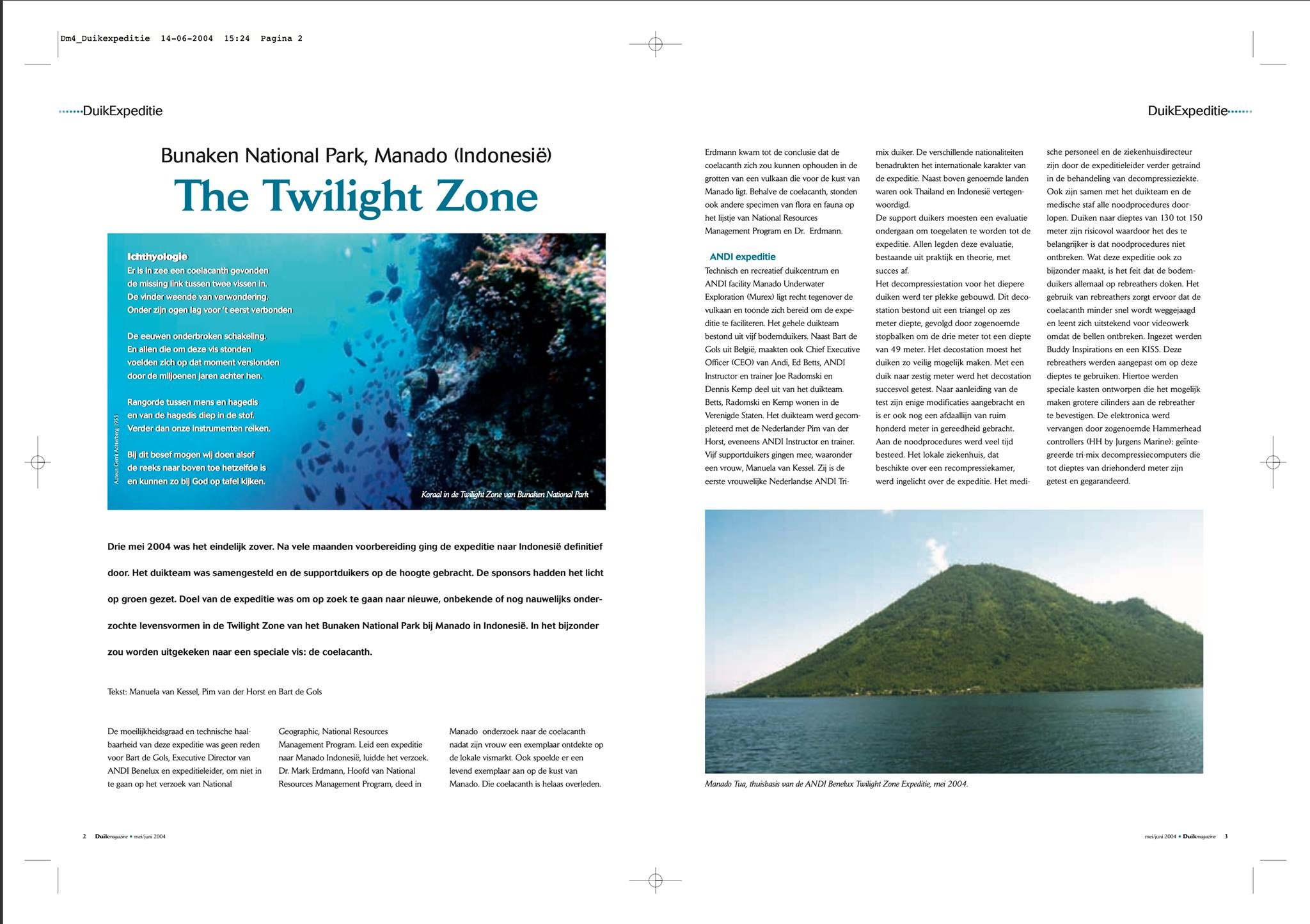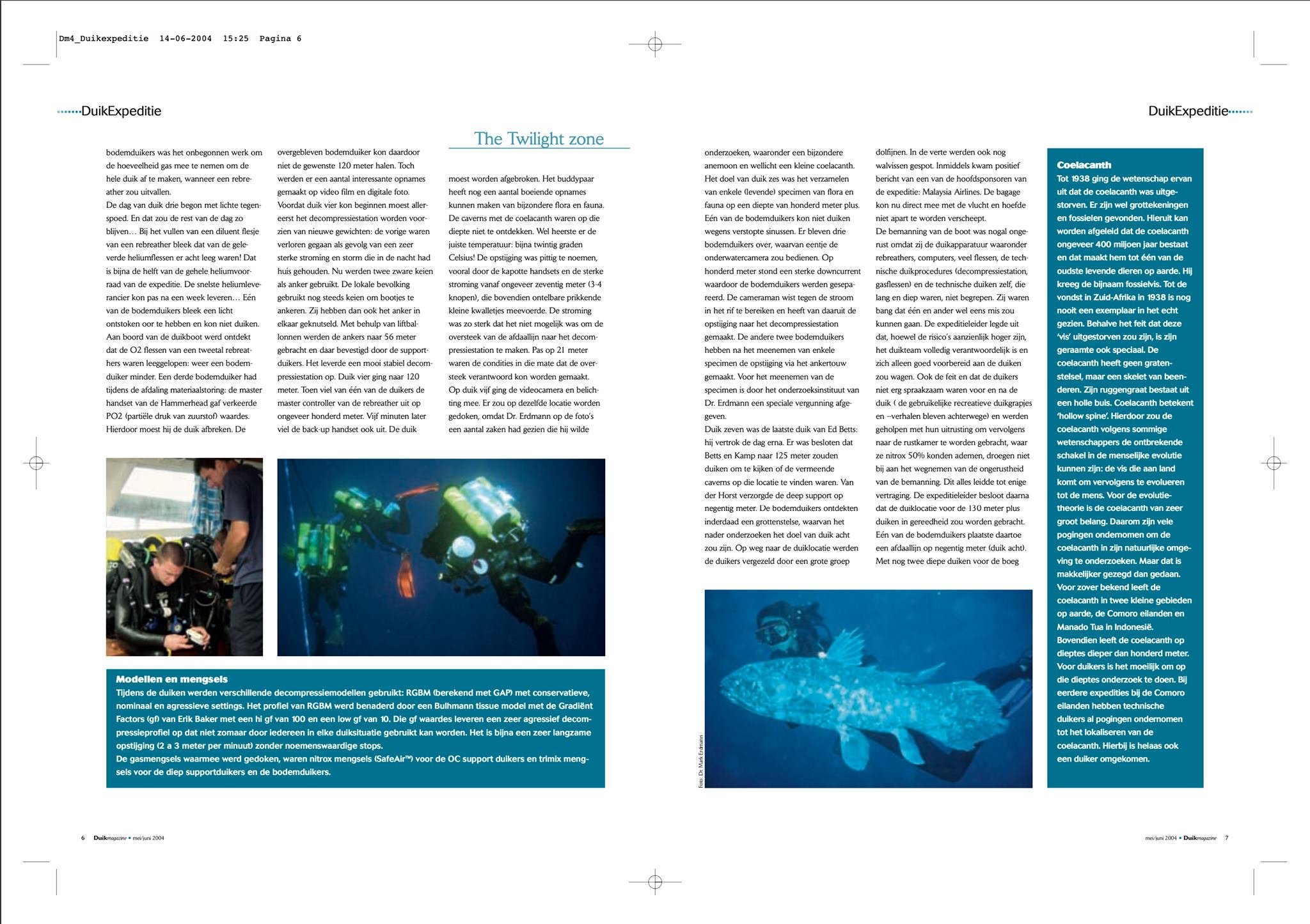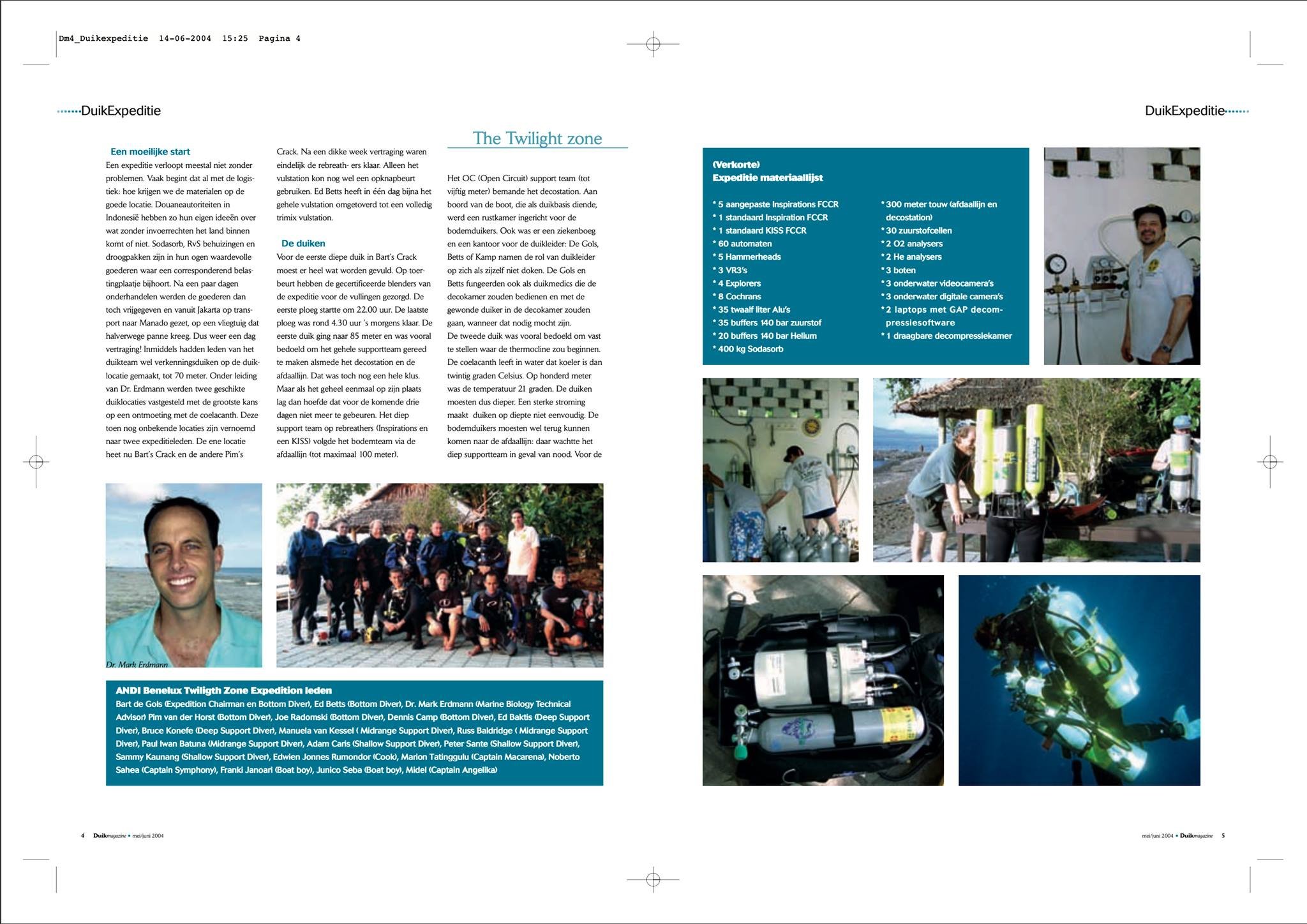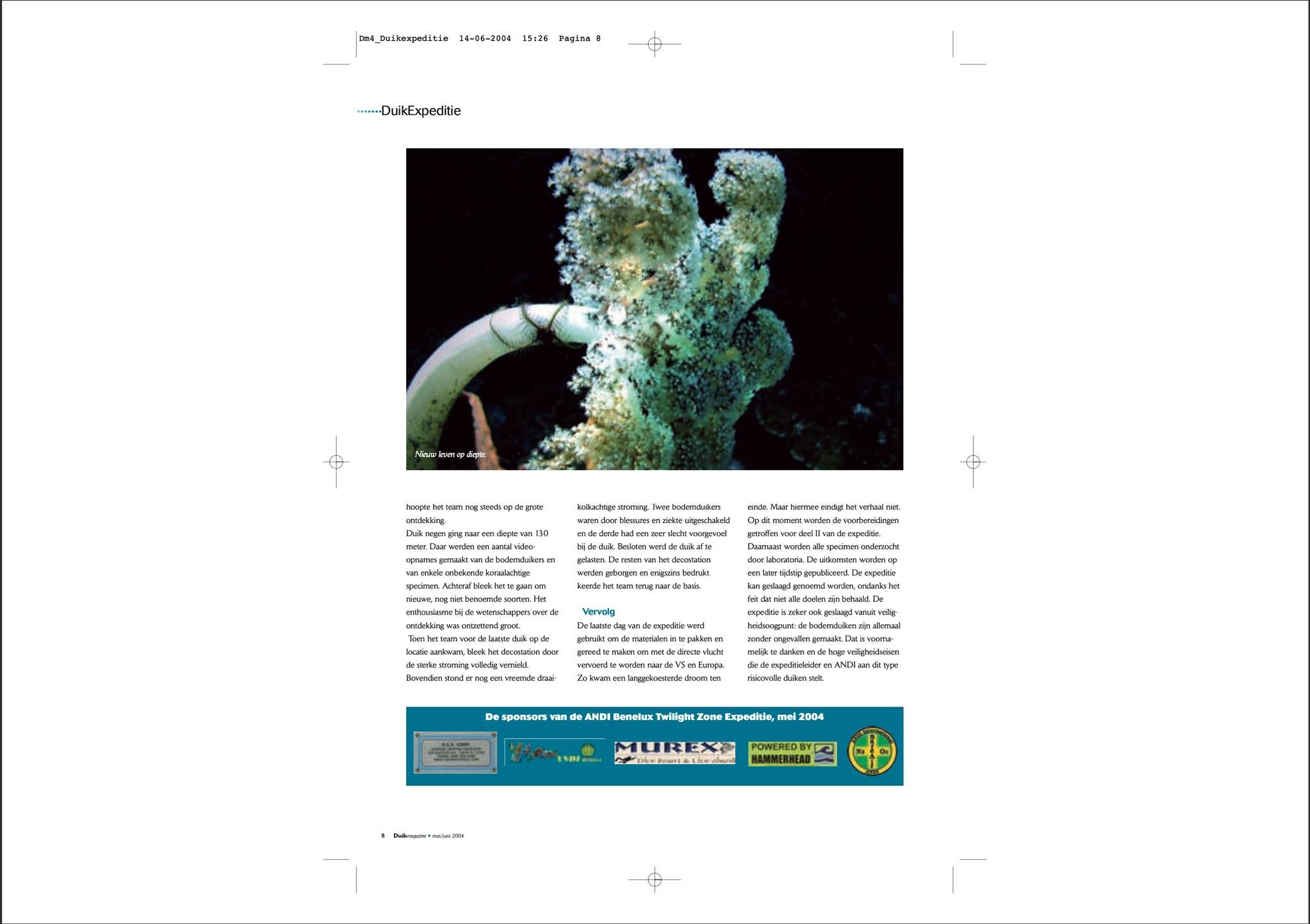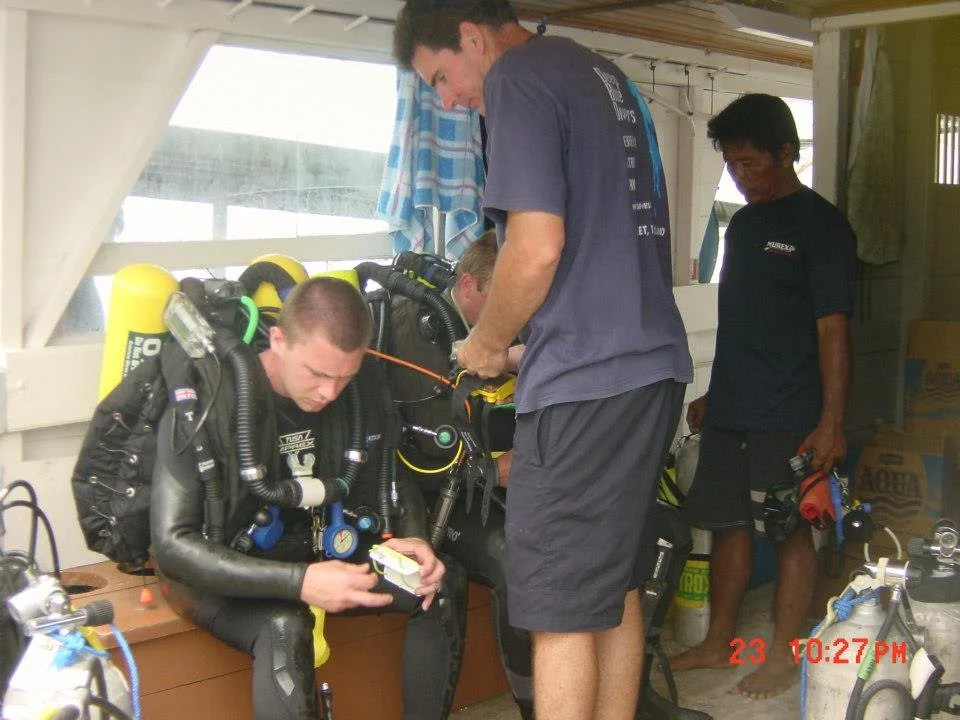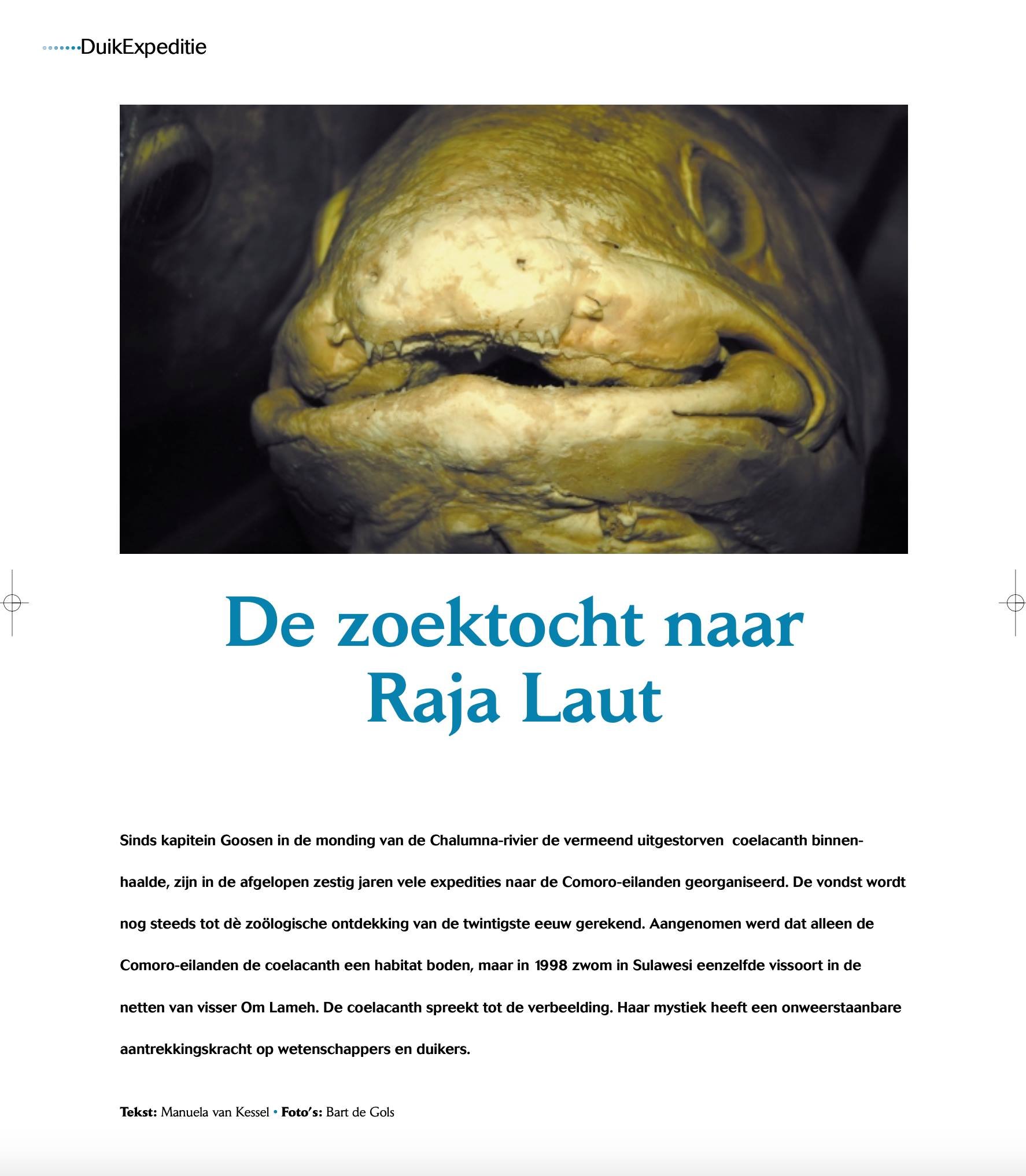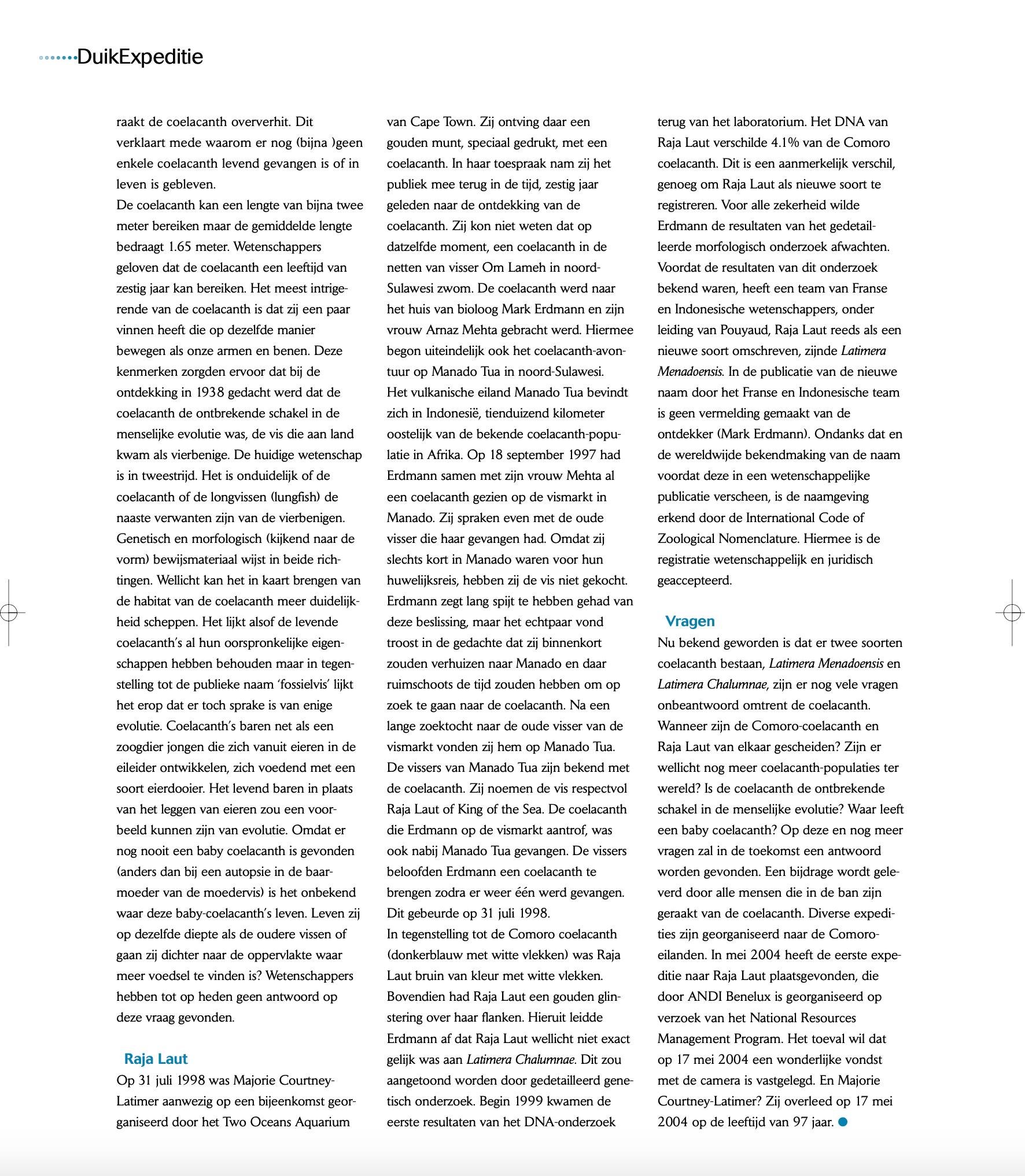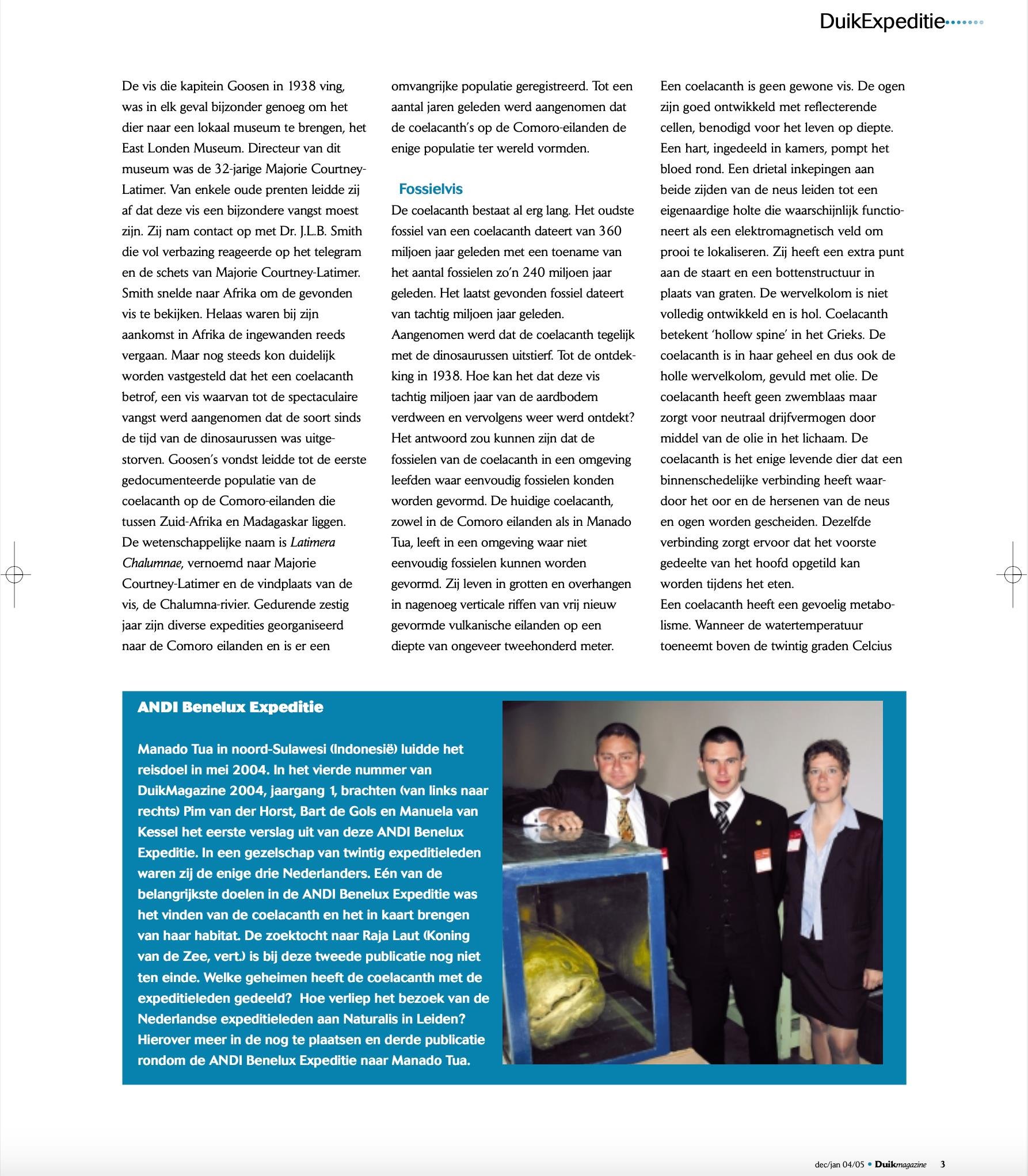My journey has been fueled by an insatiable curiosity and a relentless drive to delve into the unknown, to unravel the complex web of life that exists both in the shadowy depths of the ocean and in the expressive gaze of our canine companions. Starting my career as an extreme exploration and experimental diver, I found myself drawn into the silent, mysterious world beneath the sea's surface. Each dive represented a venture into the unknown, pitting human endurance and cutting-edge technology against the raw, unforgiving forces of nature. However, as my path shifted from the marine to the canine, the heart of my exploration remained steadfast—a quest for connection, understanding, and the broadening of knowledge.
Among the many expeditions that have marked my journey, one stands out for its audacity and significant impact on our grasp of the ocean's enigmas: the "Into the Twilight Zone" expedition in Manado Tua, Indonesia. As the exploration diver and chairman of this joint National Geographic mission, I led the quest to uncover the secrets of the Coelacanth, an elusive marine creature thought extinct for millions of years until its re-discovery in 1938. On May 24, 2004, we embarked into depths seldom braved, driven by the prospect of encountering this living fossil.
This expedition demanded unparalleled skill, courage, and innovation. We ventured into the twilight zone, a realm of perpetual dusk lying deep below the ocean's surface, where sunlight barely reaches, and life assumes surreal forms. The Coelacanth's habitat presented formidable challenges, including extreme depths and the necessity for specialized equipment to safely navigate this underwater frontier. We utilized experimental decompression algorithms to mitigate the risks associated with such profound depths, expanding our understanding of human physiology and diving science. Our custom rebreathers were tailored to maximize both efficiency and safety, enabling us to extend our time in the depths to observe and document the Coelacanth's behavior in its natural environment.
This foray into the unknown was a testament to the power of human curiosity and our relentless pursuit of knowledge. It highlighted the importance of transcending the comfortable boundaries of exploration to uncover new mysteries and broaden our comprehension of the world. The success of our mission not only shed light on the Coelacanth's existence but also paved the way for further deep-sea exploration and discovery, challenging us to keep venturing into the uncharted territories of our planet.
The "Into the Twilight Zone" expedition served as a profound metaphor for my subsequent journey into the realm of Cynology—the scientific study of dogs. Just as we plunged into the ocean's depths to uncover the secrets of the Coelacanth, I embarked on an exploration into the complex and often misunderstood world of canine behavior and psychology. The same principles of exploration, innovation, and deep respect for nature's mysteries that guided our deep-sea ventures have been instrumental in my study of dogs. By adopting a scientific approach akin to the experimental algorithms used in deep-sea diving, I have developed novel methodologies and insights into dog training and behavior. Inspired by my experiences as an exploration diver, these innovations in Cynology have the potential to profoundly enhance the human-canine bond.
In the underwater world, where every shadow could unveil ancient stories and every dive tested the limits of human capability, I learned invaluable lessons. The ocean instilled in me the virtues of patience, the critical importance of non-verbal communication, and the foundational need for trust and teamwork. These lessons, learned in the harshest of environments, became the cornerstone of my work with dogs, requiring more than mere knowledge; they necessitated empathy, compassion, and a profound respect for their nature.
Cynology is more than training or behavior modification; it delves into the heart of the canine-human relationship, exploring the evolutionary, genetic, and emotional bonds that unite us. My dive into Cynology was driven by the same thirst for understanding that propelled me into the ocean's depths—a desire to decode the mysteries of communication, behavior, and coexistence.
As my expertise in Cynology deepened, my focus expanded to include the broader ecological and conservation implications of our relationship with dogs. Studying the behavioral ecology of both domestic and wild canines offered insights into their interactions with one another and their environments, echoing my earlier conservation work in marine ecosystems. Just as marine conservation hinges on the interconnectedness of species, so too does canine welfare depend on our understanding of their natural behaviors and roles within the ecosystem.
The transition from exploring underwater worlds to navigating the complexities of dog behavior and training presented challenges, requiring me to adapt and develop new skills. Yet, the rewards have been profound, offering the exhilaration of discovery in both realms. Looking ahead, I envision a future where Cynology's principles are widely embraced, fostering a deeper, more respectful relationship between humans and dogs.
Reflecting on my journey from the ocean's depths to the heart of Cynology, I see it not as a shift from one world to another, but as a continuous path of discovery. Whether facing the mysteries of the deep sea or unlocking the secrets of canine behavior, the core of my exploration has remained constant. It's a journey of seeking understanding, building connections across the natural world, and finding the extraordinary in the everyday. This path has shown me that exploration is not just about discovering new territories, but about seeing the familiar with fresh eyes and an open heart, reminding us of our shared desire for connection, our common need for understanding, and our capacity to live in harmony with the natural world. My story, at its heart, is one of discovery—not just of the unknown beneath the waves or within the souls of dogs, but of the enduring connections that bind us to the earth and to each other.
Bart de Gols - copyright 2024

